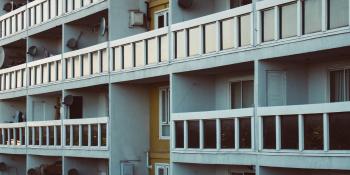
Residential energy efficiency: A key to a more sustainable future
Residential energy efficiency is driven by the need to address energy poverty, which affects over 40 million people across the EU, particularly the elderly and low-income households, and remains a significant barrier to achieving a more sustainable future for all.
In 2021, 6,9 % of the EU population could not keep their homes adequately warm. In 2022, this percentage rose to 8 %, corresponding to an estimated 40 million of energy poor people, according to the EU statistics on income and living conditions (EU-SILC)[1]. Energy poverty can lead to increased greenhouse gas emissions and exacerbate climate change, as households may resort to using fossil fuels or inefficient energy sources to meet their energy needs. Furthermore, energy poverty can also have a negative impact on people’s health, their social inclusion and economic development.
Our Community Tailored Actions for Energy Poverty Mitigation, or ComAct [2], project, funded under the European Union’s Horizon 2020 program, targets energy-poor people in five pilot countries: Bulgaria, Hungary, Lithuania, North Macedonia and Ukraine. A survey of over 1,000 people across those five countries conducted under ComAct project in 2021 found that 37% of respondents above 60 years old spend more than 15% of their income on energy, more than 34% are unable to keep their homes warm and almost 54% are unable to keep their homes cool. These results offer an insightful glimpse into the problems and challenging conditions faced by people in multi-family apartment buildings in Central and Eastern Europe and correspond to the findings of the EU-SILC survey, which also shows how energy poverty disproportionately affects low-income households. Over 34% of households in the lowest income quintile reported that they cannot afford to keep their homes warm, compared to 3,4% of households in the highest income quintile with over 42% of households citing high energy cost as the main reason. Moreover, the survey revealed that the prevalence of energy poverty varies greatly depending on the type of dwelling. People living in buildings with poor thermal insulation and inefficient heating systems were more likely to experience energy poverty than those living in energy efficient buildings. All of these findings highlight the importance of efforts and interventions that promote energy efficiency to reduce energy poverty, which is a significant barrier to sustainability.
The importance of energy efficiency is well recognized by the EU, which placed the EU-wide energy poverty definition into the new Energy Efficiency Directive for the first time, showing that energy efficient interventions are the way to reduce energy poverty and signalling the need for addressing it.
The European Union has set ambitious goals for reducing greenhouse gas emissions with the ultimate aim of reaching net-zero emissions by 2050. More specifically, as part of the EU’s overall goal to achieve climate neutrality by 2050, it aims to reduce greenhouse gas emissions by at least 55% and increase the share of renewable energy in the EU’s energy mix to at least 32% by 2030.
Since buildings are responsible for a significant amount of energy consumption in the EU, accounting for 40% of the EU’s final energy consumption and 36% of greenhouse gas emissions, increasing the energy performance of new buildings, improving energy efficiency of existing buildings and decreasing household’s energy poverty is, therefore, essential to achieving the EU’s climate and energy objectives.
[1] prediction based on the information from a presentation from the European Commission’s Directorate-General for Energy (April, 2023)
[2] The ComAct project, coordinated by Habitat for Humanity, Europe and the Middle East area office, aims to make impactful energy-efficient improvements in multi-family apartment buildings affordable and manageable for energy-poor communities as well as to create the necessary assistance conditions for lifting them out of energy poverty. The project includes ten partners: MRI, IWO, LCA, ENEFFECT, BURGAS, OHU, Habitat for Humanity Macedonia, ENOVA, Habitat for Humanity Europe and the Middle East.